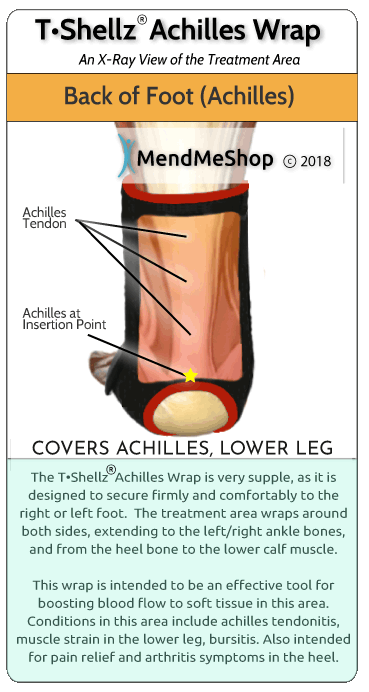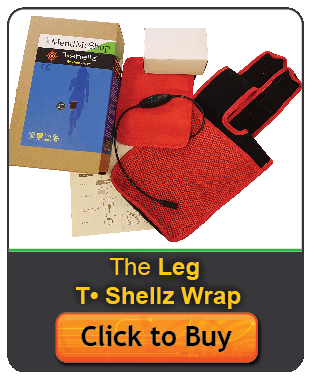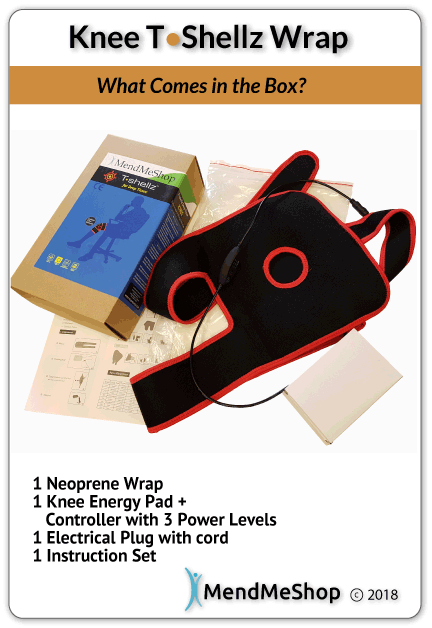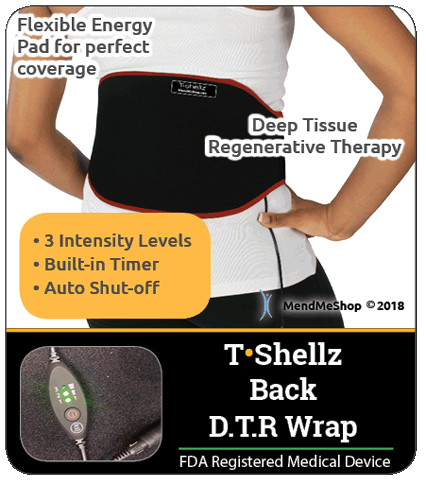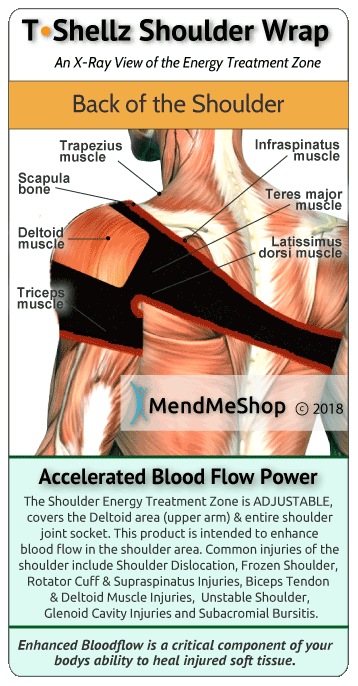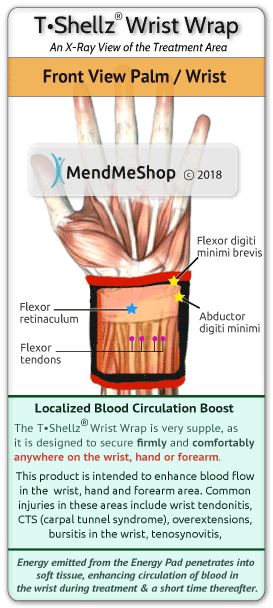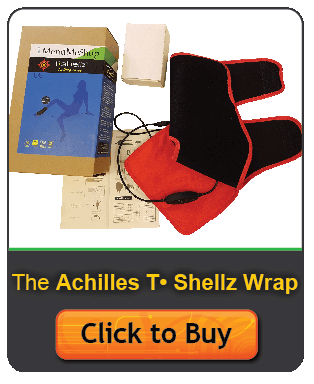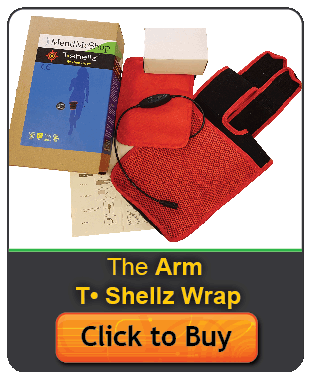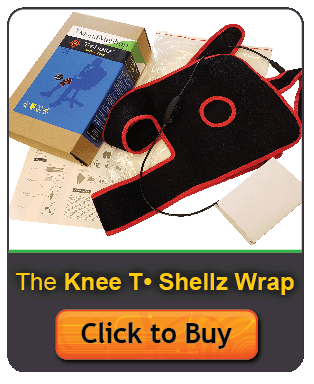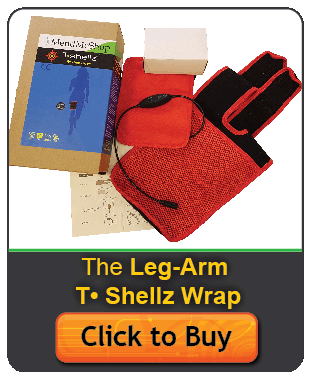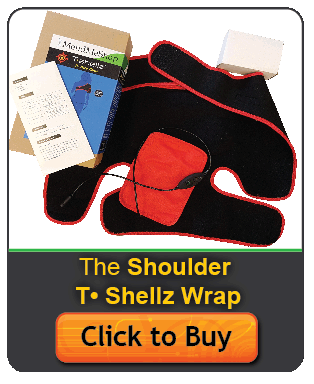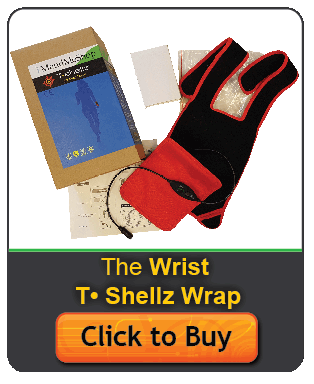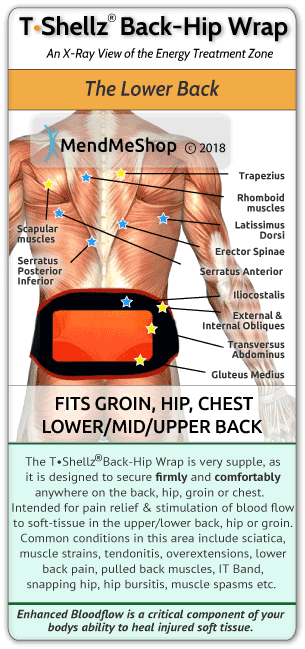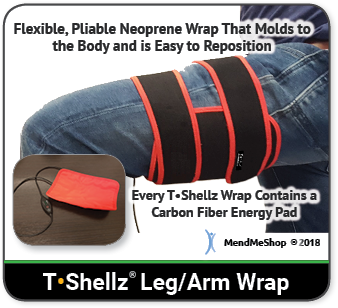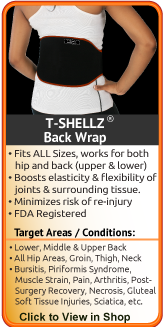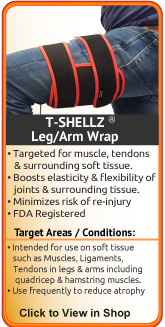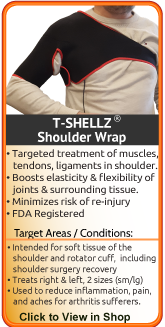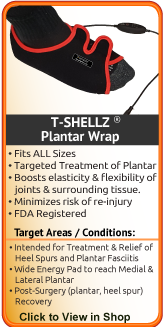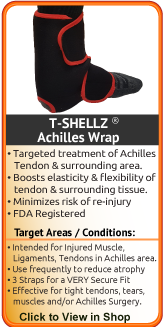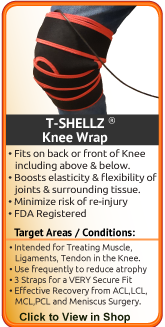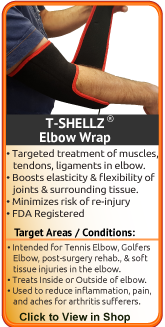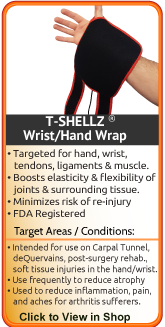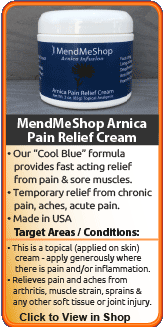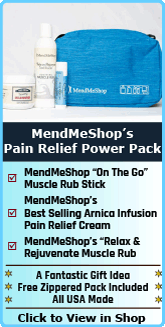|
| An Advanced Look Into Causation, & Possible Conservative Treatment Options for Muscle TissueWe Have Helped Thousands of Sufferers Deal With Muscle Injuries, Strains, Tears, Pulls, Cramps and Spasms Over The Past 13 Years via Our Home Conservative Treatment Recommendations. Conservative Home Treatment Options for Muscle Injuries For years, professional athletes have had access to treatment methods that allow them to heal much more quickly and completely than you or I. That's why injured athletes are often back in the game in a matter of weeks, while you could suffer for months or even years. Times have changed - Professional Grade muscle therapy devices are now available for anyone that needs them! Muscles injuries can, and do happen to anyone - not just professional athletes. Right now there are thousands of doctors and physical therapists dealing with patients that require a solution to heal their injury as fast as possible. Maybe they are competitive weightlifters, wrestlers or football players that need to return to their sport quickly (downtime = money). Or maybe they're just patients that are unwilling to just take pain pills, lay in bed and wait. 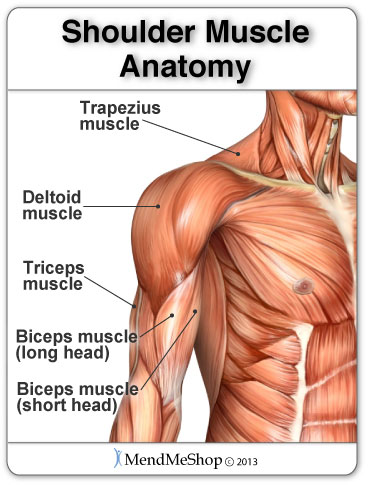 If you've been living with muscle pain or a strain for some time now, it's almost a sure thing that you're feeling discouraged from the on-going pain and re-injury cycle. Seemingly simple things may now seem impossible - like reaching for a high shelf if you suffer from a shoulder muscle injury, twisting your leg if you have a groin, hip, hamstring or quadriceps muscle injury, or standing on your tip-toes if you have calf or shin pain. The constant pain in your muscle, occasionly shooting twinges and overall weakness just adds to the long-term misery of dealing with this type of injury. For muscle injury sufferers it's really not necessary to face the months or years of horrible muscle pain. The truth is that your body already knows how to heal your muscle injury. Your body will even start healing from the moment that it's injured. It truly is amazing what your body is capable of... but these healing processes need help to speed up healing of serious soft tissue injuries and help provide long-term, sustainable results. Regardless of whether you just injured your muscle or your muscle keeps getting strained and re-injured - we can definitely help! The 3 Stages of HealingStage 1: Reduce Initial Inflammation (if there is any)Inflammation is the body's natural response to an immediate soft tissue injury and is a normal part of the healing process - helping to reduce tissue infection in the early stages of injury. Swelling, pain, heat sensation, redness, and loss of function are the main symptoms experienced. 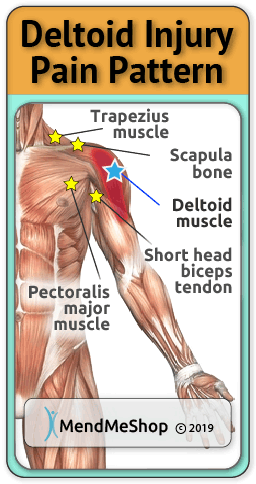
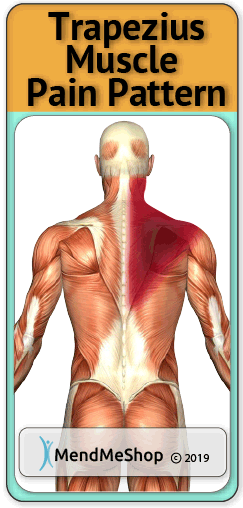
The combination of rest, topical pain relief cream and minor amounts of cold is the gold standard in medicine for minimizing tissue damage and reducing inflammation after injury or activity. It serves as a critical bridge into the next phase of the healing process. For certain soft tissue injuries, there may be no other option than surgery. As an example, if you have a full tear (often termed as "avulsion") of a ligament, tendon or muscle - attachment surgery will be required to sew them back together; in some cases, graft surgery (moving soft tissue from one site to another) is utilized when reattachment success is improbable. The overwhelming majority of soft tissue injuries, however, do not require surgery and in such cases your physician will almost certainly recommend conservative treatments options. The combination of rest, elevation, topical pain relief cream and the use of a Cold Compress or Ice Pack (when there is swelling) is the gold standard in medicine for minimizing tissue damage and reducing inflammation after injury or activity. It serves as a critical bridge into the next phase of the healing process. There are certain cases where inflammation is very minor or even non-existent. This behavior is often found in tendinosis and osteoarthritis injuries. If there is no swelling, then there is little need for cold - and as such, treatment should proceed directly to stage 2. Stage 2: Enhance Blood Flow to the Injured Soft TissueTendons,ligaments, and muscle fibres are dense tissues. As a result, they naturally receive limited blood flow and this is precisely why injuries to these tissues take so long to heal. The challenge is, how do you effectively increase blood flow to these tissues?
 When you have a muscle, tendon, ligament or bursa injury, there is reduced blood flow to the injury site - inflammation and reduced movement (lack of activity or on-going immobility) will reduce the flow of blood - and if you think about it, this makes sense. If you are moving your injured knee, you run a risk of increasing the severity of the injury which is not good at all. If there has been some healing, you could re-injure this soft tissue all over again, quite possibly making it worse. It is through the blood the body carries the oxygen, nutrients and water that injured tissues rely on for recovery.. It is well known that increased blood flow helps your body accelerate the healing process. When you have a muscle injury, there is reduced blood flow to the injury site - inflammation and reduced movement (lack of activity or on-going immobility) will reduce the flow of blood - and if you think about it, this makes sense. If you are moving your injured muscles, you run a risk of increasing the severity of the injury which is not good at all. If there has been some healing, you could re-injure your muscle all over again, and even injure it worse. 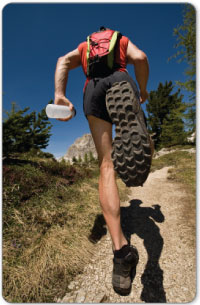 This is why we feel the TShellz Wrap® is such an important tool. The whole purpose of the wrap is to accelerate blood flow to soft tissue. The end result; you relax the blood vessels within soft tissues of the treatment area. The vessels will naturally expand and allow for more blood flow to reach the very tissues you are trying to heal. In addition, this process will help clear the area of toxins and excess fluid build up, thereby reducing inflammation. Stage 3: Recognize That Healing is a Process With dedication, the right tools, and the right information - you will achieve your goal of a sustainable recovery. A combination approach of cold therapy, TShellz Wrap® treatments, and functional movements will make it happen much more quickly. In our experience, soft tissue repair rates via conservative home treatment methods using a dedicated, comprehensive approach have surprised many of our clients, but will differ from person to person. In nearly all cases, however, it is very important to stop whatever you were doing that created the injury in the first place (ie. running, yoga). If you have questions, we welcome you to call our office toll-free at 1-866-237-9608 (Continental US), or Internationally at +1-705-532-1671. How Serious is Your Muscle Injury?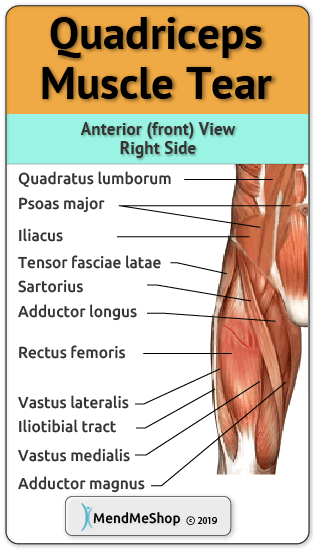 Partial muscle tears, muscle spasms, pulled muscles and muscle strains are painful injuries that can flare-up over a long period of time unless treated properly. The most common reason for these injuries is from lack of stretching (not warming up) before doing some form of actvity that puts high loads on the muscle. The first thing your physician will tell you is to stop doing whatever it was that caused this problem in the first place. This is a big problem for many people when you're trying to heal this injury because it usually means you'll have to take time off from work to heal. If you aren't working the other option is to stop all activity related to the injury and rely on someone else to help you. If this sounds like you then you know how important it is to heal your muscle injury quickly and make sure it doesn't happen again. Your muscle can get strained when it's stretched beyond its' limit or it's in a vulnerable position. When this happens the muscle tissue becomes strained or torn. Acute muscle strains are caused by a direct hit, fall or from overloading the muscle. Chronic muscle strains can happen from overuse (repetitive stresses) or past unhealed injuries. Muscle damage can range from small strains to partial and complete ruptures which are serious injuries. Only a physician can give you an accurate assessment of your muscle injury. It's always best to see a doctor if you're not sure how severe your muscle injury is. 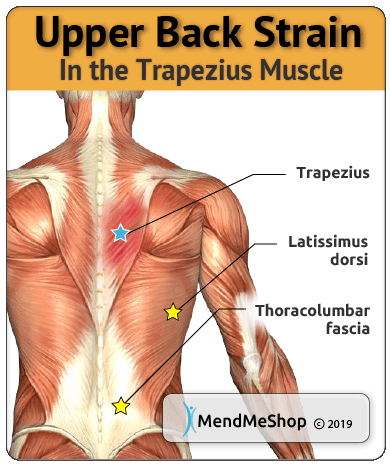 After you've actually strained the muscle the overall wear and tear on a daily basis will increase. This is why it's very important to rest and heal the injury completely before returning to your normal activities. If muscle strains or pulls aren't cared for properly, these injuries will eventually become chronic. Once in the chronic stage, the muscle becomes less flexible from scar tissue build-up. If you have a chronic muscle strain or partial tear and decide to continue with your regular activities your injury will get worse. Tiny tears will start to form around any scar tissue on your muscle. These tears will then grow over with scar tissue and turn your injury into a cycle of re-injury and build-up of massive amounts of scar tissue. Knowing this, it's important to deal with your strained muscle fully and completely to minimize the build up of significant scar tissue and maintain flexible muscles. 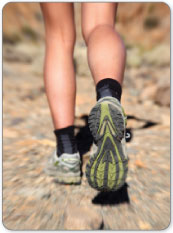 Recovery can take a long time but proper healing is essential to regain strength and get you back to the activities you enjoy. Complete recovery can be easily delayed by re-injury to your muscle. It's almost impossible to keep from re-straining the muscles because even in a sling our shoulder can still move. It's just not possible to stop everything and rest the injury properly. What ends up happening is we continually re-injure the muscle through our daily activities further setting back our recovery. Muscle injury sufferers will always be at risk of re-injuring their muscle because even when the pain is gone the muscle still isn't fully healed. But, when pain disappears, that's you start using their your muscle normally again because you think it is fully healed although it almost certainly is not. It's just not possible to stop everything and rest the injury properly. Everyone has demands that make them keep going and when we're active we prevent our muscles from fully healing. What it Really Means to have a Muscle StrainThe amount of pain you will feel from a muscle strain will vary largely depending on the severity of the strain. The 3 grades of muscle strain are as follows: Grade 1 Muscle Strain 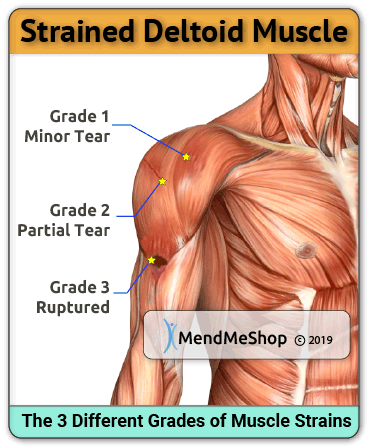 This is the mildest form of muscle strain, and is characterised by the feeling of a general ache in the area. A grade 1 strain should not hinder a persons ability to function casually, but will prevent them from undertaking significant stress on the muscle. The ache occurs during the activity and slowly disappears once the activity is stopped. If a correction to the activities is not made, then the condition will progress to a grade 2 level. Correction to the activity could include changing routines (injury due to movement repetition), the way the activity is performed (mechanics of form/performance) and/or more rest period length between activity periods. Grade 2 Muscle Strain A grade 2 muscle strain condition typically means that the pain becomes more pinpointed and tender at the area of the strain. Edema (excess fluid build-up) may occur at this stage, and symptoms will continue even after the activity is stopped. As a grade 2 condition progresses, swelling will progress as will suddens spikes of pain. Grade 3 Muscle Strain If you are suffering from a grade 3 muscle strain, you really have undergone a major muscle tear or even a full rupture. Range of Motion in the affected joint(s) will be severely limited and there will be significant bruising and swelling within 24 hours of the injury. Further to this, you will now be involuntarily compensating for this pain by using other joints in the body when attempting to perform activities (overcompensation). How Long to Recover from a Muscle StrainThe length of time to recover from a muscle strain is very much dependent on the grade of the strain, and can span from a couple days to 6 months. Many studies suggest that a fast treatment response during the acute (initial) stage of the injury will lead to a very significant reduction in rehabilitation time. Muscle Reinjury RiskAs shown in studies, the recurrence rate for strained muscles will vary depending on which muscle is affected. For the hamstring - a large set of muscles that undergo serious forces when walking/running/climbing stairs - the recurrence rate is very very high (22% to 34%). This means that hamstring injury sufferers have at least a 1 in 4 chance of injuring their hamstring yet again - once the initial injury has healed. We all have busy lives and when we are active we prevent strained muscles from healing properly, leading to a longer recovery time with an increased chance of re-injury. Re-injury to Your Muscle Must be Avoided at All CostsConstant re-injury needs to be avoided at all costs! Please excuse me for stating the obvious, but I really need to drive this point home. Re-Injury is very common... why? Everyone wants to get back to their regular lifestyle once the pain has reduced. Here is where you have to be careful - often, much of the pain is due to inflammation - so, once you iced the area and the swelling dropped, a lot of the pain probably disappeared too. So then you start back at your regular lifestyle and then all of a sudden the old injury starts flaring up again - this is re-injury! Just Because The Pain Has Dropped, It Does Not Mean The Underlying Injury Has HealedRe-Injury is bad because sure, it delays the healing process, but what's worse is that every re-injury and additional healing cycle increases the amount of scar tissue that builds up in the area of your original muscle injury (the quadricep muscle.. or lower back, for instance). This applies to tendons, ligaments and other connective tissue as well. Scar tissue is a weak form of collagen - hard, inflexible, and tough to get rid of once it begins to take hold. The more scar tissue that develops, the more you lose the range of motion in the joint. With excess scar tissue build up, lack of flexibility in your muscles and the affected joint in general will remain weak and very prone to re-straining and re-tearing. While you can go a number of days and even a few weeks without any major setbacks during the injury.. inevitably, a certain movement or motion will happen that causes your injured muscle to strain and even tear once again. This is attributed to the scar tissue build up and will result in the buildup of yet more scar tissue and a further reduced range of motion (ROM). The more scar tissue that develops, the greater the risk of winding up permanently injured with chronic pain, atrophy or even arthritis. Scar tissue means that your muscle (and affected joint) will not perform as well as it once did and it makes it much more prone to injury later on. The longer the injury remains, the risk of atrophy increases and the risk of increased scar tissue growth increases. This is why it is critical to treat your muscle injury now rather than later. Continuous re-injury and build-up of scar tissue makes it more likely that you will wind up with chronic pain, reduced Range of Motion or even arthritis (permanent damage). The human body will use scar tissue as a temporary solution and will try to build the scar tissue as fast as possible to heal tears in soft tissue (muscles, tendons). Scar tissue can form fast to bring together the edges of a tear, but working fast doesn't mean that the job's done right. When scar tissue forms it doesn't come together as neatly as regular (healthy) tendon/ligament tissue would. Scar tissue fibers will lay down over top of your tear in a cluttered, messy and jumbled up way. This is how scar tissue works - it is messy and inelastic. The scar tissue that forms in your soft tissue will be unorganized and won't line up properly with the healthy tissue surrounding the tear. This scar tissue will attach to everything in and around your muscle injury including the surrounding healthy tissue as well. This results in a long-term fusing together of everything the scar tissue touches, reducing your ability to move and making the injury even more painful! The longer the injury remains, the more scar tissue is likely to build. This is why it is critical to treat your muscle injury now rather than later. Continuous re-injury and build-up of scar tissue while staying active or going back to work means you'll have a greater chance of winding up with on-going pain, and even more swelling / inflammation in your muscles. If you have strains or spasms in your muscle(s) it is very important to heal it quickly and completely. You must avoid the build up of scar tissue. If you don't, your muscle injury may be the start of a long term chronic injury resulting in a loss of Range of Motion and joint atrophy. This is where pro athletes have the advantage. They use therapeutic tools to speed their healing so that they are 100% healed before they resume their sport. Even once they return to the sport, they use these tools constantly to heal any recurring tendon or muscle damage before it can build into something big. For professional athletes, having the right tools means all the difference. For the rest of us having the right tools should be just as important. A Muscle Strain Does Not Have to Persist for Months or Longer. Here is Why It Does For ManyRecovery from a muscle strain or muscle tear can take a long time, especially when some of the less effective, traditional methods are utilized. This is simply because many treatments either focus on masking of pain or are too inconsistent to provide sustainable improvement. 1: Visits to Physio (PT) Help - We Always Recommend It - But It Can Be Costly And InconvenientWhile we tout the benefits of PT and believe it to be integral for most sufferers of soft tissue injuries, the problem is that people only attend sessions a few times a week. To truly provide a long term solution to your muscle strain, you need to be receiving multiple treatments on a daily basis. Not just any type of treatments, but ones that focus on generation of new healthy tissue. Treatments for soft tissue (muscles, tendons) are cumulative in nature...meaning the more the treatments are administered, the faster the benefits can be experienced. Who these days has time to visit a therapist on a daily basis? Not only is your time limited, but the cost of daily PT sessions is out of reach for most people. Therefore, the focus needs to be on adding treatment options that can be done frequently, from the comfort of your own home (and even the workplace if the opportunity presents itself). We will discuss these options later on down the page. 2: People Tend To Focus Too Much On Cold TreatmentsWe see it all the time - people for weeks and even months only focus on using cold. Doing too much cold will actually inhibit the recovery because you are starving the injured tissues of the blood flow they need to repair and rebuild the collagen. Cold restricts the vessels - reducing the blood flow to the tissues that truly need it most. Cold treatments should be more focused on in the earliest stages of an injury with much less focus in the mid and latter stages.The truth is, there will always some mild inflammation associated with tissue injuries. However, some of that inflammation will remain UNTIL you begin to focus on healing the soft tissue (muscle). Once this begins to heal, the inflammation will then subside more permanently - not just temporarily like with cold treatments. As an analogy, think of a home with a leaky roof. You can place a bucket on the floor of the attic whenever it rains - and this will help temporarily, but does it truly address the situation? Obviously the answer is no. Not until you focus on repairing the structural issues with the roof - will the problem be actually solved. The same concept applies to injured soft tissue - you need to focus on reinforcing growth of flexible, strong tissue. To do this, you need more blood flow reaching them, not less. 3: Injections Can Cause Harm If You Are Not CarefulThis can be VERY helpful in alleviating pain and in many cases, pain relief alone can make a huge difference. However, some people get a false sense that their injury is healed because they are not experiencing the pain they once did. Some individuals even engage in activities they should not be doing because they "no longer feel pain". Once the effects wear off, people often find their bursitis persists . This of course, results in a prolonged recovery. Be very careful about your activity after the injection because there is little, if any, pain feedback to tell you that you're overdoing it. Merely masking the pain can be very helpful temporarily, but it is not a solution; it is just a temporary fix. 4: They Continue to Aggravate & Re-Injure Their Muscle(s)It goes without saying that anyone suffering from a muscle strain or tear should want to minimize their chance of worsening the injury, or re-injuring the muscle once it has started to get better. Obviously, a worsening injury will delay the healing process, but what's worse is that every re-injury and additional healing cycle increases the amount of time that your joint is immobilized. Time not kind to an immobilized joint - you lose strength in the joint but worse than that, you lose the range of motion in your joint via atrophy ( muscles, tendons and ligaments slowly shrink and weaken, decreasing joint elasticity). The more time that goes by with an immobile joint, the more likely you will wind up with a chronic joint problem (long term injury such as tendinosis and/or bursitis). Basically it means that your joint will not perform as well as it once did and it becomes more prone to injury again later on. Muscle Injuries - They Certainly Are Life Changing Aren't They...If you've been living with the agony of a significant muscle spasm or strain for some time now, it's almost a sure thing that you're feeling discouraged, tired, and worn-out. Seemingly simple chores are now impossible - like getting in and out of seats (or your car), using a hammer/scredriver, walking the dog or just standing and walking for significant periods of time. The constant pain has no doubt interrupted your sleep, just adding to the long-term misery that this condition can bring on. It is challenging to keep from re-straining muscles and tendons once they have been injured significantly. It's just not possible to stop life's activities for weeks/months to rest. What ends up happening is we continually re-injure the muscle through our daily activities - further setting back our recovery. Each time the muscle is placed under significant stress, the chance of tissue breakdown and growth of scar tissue becomes more likely. A Muscle Injury Can Lead to Other Conditions and Injuries.Every time we use our injured muscle, damaged and swollen tendons and muscle tissue move; when they are inflamed, every movement hurts. With injured tissue, pain happens - sometimes a LOT of pain, so we try not to move it. So, when doing something we need to use our muscles for (climbing stairs, getting up from the sofa, typing on a keyboard, playing tennis, swimming), we start to use other muscles more (instead of the muscles that are causing pain). Our body will automatically try to use other muscles to reduce pain even though it is inconvenient. This concept of using other muscles/joints to complete a task is known as overcompensation. A couple days later - after purposefully avoiding movement of our damaged muscle(s), the pain and swelling have gone down and this is where the trouble begins! The pain disappeared with the swelling but we still aren't fully healed! Not knowing this, we start using our hamstring normally again and then the injury swells up again like it did before - all because the injury wasn't fully healed in the first place. So the pain comes back and now we start overcompensating yet again. Eventually, we start overcompensating more and more in an attempt to lessen the pain. The problem is now that many of the muscles and joints you are relying on due to overcompensation are now being overused. This means that aches and pain now become commonplace in areas that you weren't expecting - all as a result of the original muscle injury and the body's instinctive nature to "protect" the orginal injury - all because the injury wasn't fully healed in the first place! A typical example might be someone that has twisted their right knee and after a couple weeks, their left knee, hip and ankle are radiating a lot of pain due to all the body weight being placed on the left side due to right knee pain.  Everything in the human body is connected. Any muscle injury can lead to other injuries over time if not treated properly. You might start using your opposite arm or leg to perform normal daily activities, like carrying grocery bags or moving things around your house. You may also try to use the opposite side of your body to get back to work sooner to avoid waiting for your muscle injury to heal completely. Many of our clients have experienced pain in other areas of their body because they shift the "work" to the opposite side of their body. For example, a serious muscle strain in the right forearm can often lead to over-straining of the left forearm (a roofer would switch from holding a nailgun in the dominant, injured arm to the other weaker arm and likely strain that forearm quite easily). Most commonly, the injury occurs on the dominant side, so the risk of straining the other (weaker) side increases. The longer the injury (and corresponding pain) persists, the greater the chance that you will sustain more strain from overcompensation, eventually leading to issues in those areas as well. To minimize potential secondary injuries, know that it is important to deal with your muscle injury quickly and completely. We continually re-injure our strained muscle through our daily activities and now this injury has become a chronic injury. 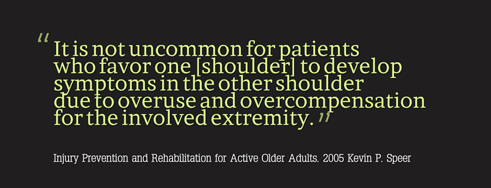 Muscle imbalances result, placing tension on bone and softer tissues - leading to a misalignment within the body. The extra stress on the opposite side of the body will also result in weakness and fatigue of soft tissue - increasing the chances they can eventually be injured or gradually degenerate. This is a textbook example of how you get an overcompensation injury. In some cases, physical therapists warn that overcompensation can be very dangerous - in the lower body, back or hips it can affect gait or alignment on a permanent basis. An injury to one muscle can easily lead to straining in other areas, making an overall recovery hard to initiate. For example, a serious shoulder muscle strain in the right shoulder can often lead to over-straining of the left shoulder. Most commonly, the injury occurs on the dominant side, so the risk of straining the other (weaker) side increases. The longer the injury (and corresponding pain) persists, the greater the chance that you will sustain more strain from overcompensation, eventually leading to issues in those areas as well. To minimize potential secondary injuries, know that it is important to deal with your muscle injury quickly and completely. Even if you try to avoid over compensation pain in your healthy muscles you're still at risk for re-injuring your strained / pulled muscle. Ignoring over compensation pain and the pain felt in your muscle while returning to regular activities or your job can lead to even more problems with healing - like a chronic muscle injury or the formation of massive amounts of scar tissue in and around your muscles and tendons. Muscle strains can become a vicious cycle - which is why it is absolutely critical to focus on methods that improve and strengthen the injured muscles in a timely manner. The faster you truly heal, the less chance you have of sinking into a downward spiral of re-injury, scar tissue growth and overcompensation injuries. Okay, So I Have a Muscle Injury...What Should I Do Now?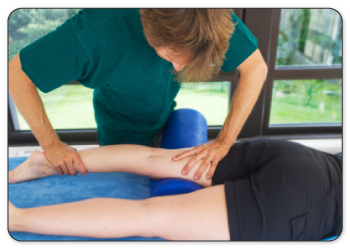 If you suspect you may have a strained, spasming or torn muscle, the first thing to do is consult your physician; only your physician can give you a proper diagnosis and from this, determine a course of proper treatment. After seeking medical advice, your physician will determine if your muscle is in fact torn or strained. If you have a fully torn muscle(avulsion) your physician will probably recommend surgery for re-attachment as there is limited options with complete detachment. If your muscle is strained or partially torn, your physician will almost always recommend conservative treatment options. Stage 1: If the muscle injury is very recent - use a good quality cold pack and Arnica Pain Relief Cream. If the injury has been going on for awhile, then skip to Stage 2 below.If you are experiencing pain and swelling in the very early stages of the injury (first 48 to 72 hours), the first step in a conservative treatment protocol would be to focus on reducing the discomfort by applying a Cold Compress or Ice Pack to the injured muscle along with a high quality pain relief cream such as our Arnica Infusion Cream. Not only will you use your Cold Compress or Ice Pack for the first 48 to 72 hours after the injury, but you should also use it during other stages of the healing process. Some examples include...
Having a Cold Compress or Ice Pack available at home to use if and when the need arises is helpful. Many of you already do so. However, too many people over-focus on cold while ignoring the most critical aspect to healing - nourishing the injured tissues with a healthy supply of blood flow needed to repair and rebuild the injured tissues. This leads to the most important recommendation... Stage 2: Focus on Increasing Blood Flow To The Injured Muscle - As Blood Flow Is How Your Body Heals Muscle TissueEven though the concept is simple, improving blood flow to injured soft tissue can be difficult. When the injury is preventing movement, the challenges are even greater. Traditional methods require your muscle to move to promote blood flow (exercise), but that same motion that promotes blood flow can at times lead to making your pain and condition worse.
Most people we deal with tell us these scenarios have happened to them many times in the past. Perhaps it has already happened to you. Promoting blood flow within a muscle or soft tissue injury to help the body heal itself is a concept that has been utilized for centuries. This is where the focus has to be if you are seeking long-term improvement. Oxygen and nutrients, carried within the blood, are critical for the body to heal itself. Without proper blood flow, recovering from an injury or condition will be delayed...sometimes for a very long period of time. The real challenge is how do you promote blood flow to your muscle without causing further injury? 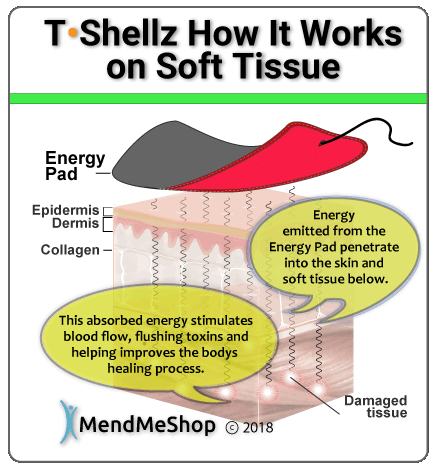 Heat energy generated by the TShellz Wraps® operate by increasing blood flow in our injured soft tissue. The objective of the TShellz Wrap® is to increase blood flow in these targeted areas, resulting in relaxation of the vessel walls. The vessels then gently expand, allowing for more nutrient rich blood flow along with extra oxygen to reach the damaged tissues. Plus, the enhanced blood flow helps in flushing waste and fluid build-up from the injury site - further enhancing the ability of the body to heal. More blood now begins to flow effectively to soft tissue in the body; damaged tissue uses the added blood flow to heal as it is through the blood that the body carries the oxygen and nutrients needed for proper and long-term healing. Now, on to recommendation number two in the journey to heal your muscle injury... The TShellz Wrap® - Healthy Muscle For The Long TermThe best option we came across in our research to accomplish effective blood flow to soft tissue at home is the TShellz Wrap®. Use of this device results in an increase of blood flow to the treatment area - all in a non-invasive manner. Have you seen what happens when you add water to a flower wilted from drought? In essence, your injured muscle is much like a "wilted" flower; your body wants to heal its injury, but needs lots of nutrients to do it. Blood brings life to your tissue by delivering healing nutrients and oxygen that are vital for their growth and survival. In addition, the blood carries away toxins and waste cleaning the area and healing it faster. Without a good supply of blood, your injured muscle simply won't heal properly. Using a TShellz Wrap® will not expose you to the risk of causing further harm to soft tissue like you can when using rigorous exercise. The TShellz Wrap® accomplishes the goal of enhanced blood flow without the need for intensive exercise and as such reduces your risk of re-injury. The TShellz Wrap® - Accelerated Blood Flow for Your Muscles (and Other Soft Tissue)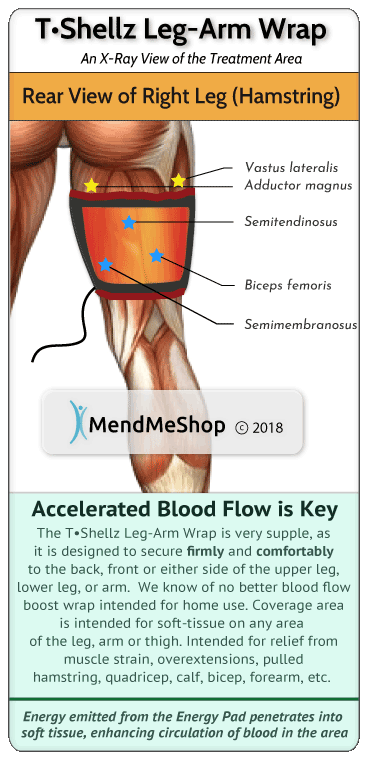 The intention of a TShellz Wrap® is to ease pain by blood vessel dilation, decrease stiffness by elongation of soft tissue, improve blood circulation, and boost metabolism and enzyme activity. In stimulating localized blood flow to damaged soft tissue, you provide needed oxygen and nutrients to grow strong healthy collagen. In addition, you will experience a clearing of toxins and excess fluid build up from the injury site. Over the intermediate term, this helps to reduce incidents of swelling as trapped fluids will be whisked away - reducing pressure on blood vessels. Using the TShellz Wrap® is truly a unique experience. Within moments of applying a treatment, you can feel the healing sensation due to the increase in blood flow within the area. During a treatment, and for quite some time after you finish, the treated area will feel relaxed and less painful. It's a very soothing sensation and extremely effective. Who Should Use the TShellz Wrap®We recommend the use of a TShellz Wrap®:
Some of the more common muscle related injuries:
Increased Blood Circulation = Increased Healing CapabilityTShellz Wraps® contain a unique Carbon Fiber Energy Pad which is flexible and will shape to conform to your body. This Energy Pad emits a uniform wave of perfectly safe energy over its entire surface. This energy is absorbed by soft tissue in the treatment area, opening blood vessels, resulting in an increase in blood flow. Increased blood circulation is what your body needs to accelerate the healing of soft tissue and this is why we recommend the TShellz Wrap®. The TShellz Wrap® is an FDA Registered Medical Device and is suitable for use in therapeutic clinics and FROM HOME. It is completely safe for people and patients to use for themselves. The technology found in a TShellz Wrap® has been used for decades in the worlds of professional and amateur sports - a contributing factor as to why athletes seem to recover from injuries so quickly. Have you ever wondered by an athlete can return to activity after 3 or 4 weeks following a soft tissue injury - while your average person takes much longer to return back to normal? The secret isn't really that much of a secret - it involves consistent treatments (meaning multiple times a day) using a treatment like the TShellz Wrap® to stimulate blood flow to the injured tissues. Most athletes have the luxury of using in-house facilities many times per day. How many us can afford the time and money to visit a clinic multiple times a day? Very few indeed. This is how you can gain some of the advantages that athletes enjoy in their injury recovery - by using a device like the TShellz Wrap® two or three times a day on a consistent basis. Consistent Treatments = Consistent And Long Term ImprovementWhat Else Makes the TShellz Wrap® So Special?We believe the TShellz Wrap® to be one of the most effective home treatments to increase localized blood flow to soft tissue in and around the treatment area. We can promise that you will receive a product that is designed to be safe and does what it is supposed to do... reduce pain (as stated in "Therapeutic Heat and Cold", 4th edition. - Ed. Justus F. Lehmann, M.D., Williams, and Wilkin) temporarily increase length & flexibility of soft tissue (as stated in "Therapeutic Heat and Cold", 4th edition. - Ed. Justus F. Lehmann, M.D., Williams, and Wilkin) and aid your body in recovering from tendon, muscle and other soft tissue injuries via enhanced blood flow. 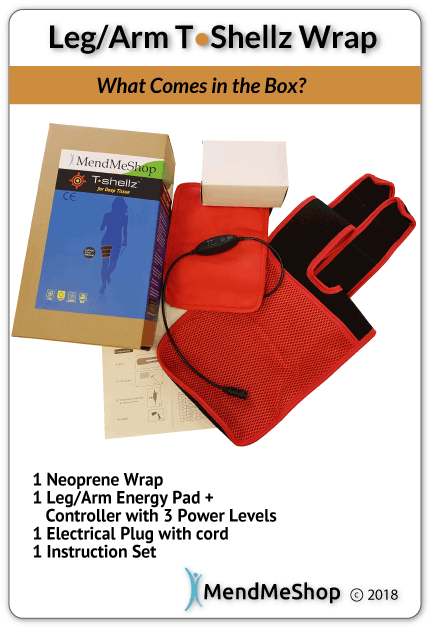 The unit plugs into a standard wall outlet to get its power. The nice thing about the power supply is that the same unit can be used in North America and overseas as well. It has the capability to operate between 110v and 230v. The TShellz Wrap® has a special signal controller that can be set for 3 different power levels of application (3=High, 2=Medium, 1=Low). The cord is long enough that you can sit or lie comfortably and watch TV, read or surf the net while you're using it. Treatments are max 30 minutes in duration and the device can be worn over clothing. This allows you to use the device at work, at home, or really anywhere you have access to an electrical outlet. ...A Quick Recap of Benefits That Can Be Achieved Via the TShellz Wrap®..
When Should I Use My TShellz Wrap During the Day?The most common question we receive from individuals prior to purchasing is - how many times a day should I be using my TShellz Wraps® and when should I be using them? While treatment plans will differ for each individual and their specific injury, there are general guidelines that should be adhered to.
The TShellz Wrap® would then be used:
Stage 3 - In Between Treatments With TShellz Wrap®, Apply Our New Fast Acting Pain Relief Cream Called ARNICA INFUSIONDealing with aches and pains affecting the foot, ankle, leg, knee, hamstring, hip, back, arm, shoulder, elbow, wrist, or hand? If so, then applying the Arnica Infusion to any of these targeted areas will bring about fast relief from the pain and sore tissues. Simply apply a small amount of cream to the body and moments later, you will experience a soothing and comforting sensation over the area. Arnica Infusion is specially designed to relieve pain due to sore muscles and joints associated with arthritis, backaches, sprains, strains, and bruises. No matter if you are dealing with an acute injury, chronic pain, or a general "flare-up" - you will experience fast relief from pain and inflammation. This is a product that many of our current MendMeShop customers asked us to develop. So we focused our time and resources over the past few years and came up, with we believe, will be one of more effective, fast acting, topical pain relief creams on the market. You are likely familiar with some of the standard topical agents on the market as most of our customers use them. The are mass marketed and even found in most department stores now. Well, we are here to say that Arnica Infusion goes many steps beyond what they offer. Made in the USA at an FDA registered manufacturing facility, you can be assured that Arnica Infusion is both safe and effective. We only source top grade ingredients while implementing strict quality control checks during every step of the production process. Expect the same high quality that MendMeShop customers have been accustomed to since we started the company in 2005. The "Cool Blue" formula is the perfect balance between the smooth application of a cream and the effective absorbing factor of a gel. It is not too thick and not too thin - just the right texture. Best of all, it feels very nice on the skin! Each application of Arnica Infusion feels so comforting and soothing, we are certain it will become an item you will not want to live without. Arnica Infusion IngredientsThe Arnica Infusion formula is based on a combination of scientific research and the use of high quality ingredients. The properties within the formula were chosen for their pain relief, anti-inflammatory, and soothing qualities. The acting ingredients within the formula include ones many of us are familiar with; along with ones that have not received a lot of publicity (only in research circles). Extensive testing resulted in a blending of ingredients that provides the most synergistic of benefits. The notable ingredients in the Arnica Infusion formula include:
Extensive quality control procedures during the manufacturing process ensure the ingredients and final product are both safe and effective. We would not stake our reputation on anything but the best. When Do I Apply the Arnica Infusion?While At WorkApply Arnica Infusion at work to help reduce acute discomfort associated with overuse of muscles and joints. No matter if you are in a physical demanding job or work within an office environment, you will be placing stress on different parts of the body and aches and pains will result. Before Or After Work, Sports, & ActivityIf you suffer from a sprained ligament, pulled muscle, strained tendon, or even bruising - apply Arnica Infusion for quick relief of the pain. Chronic Pain SufferingApplication of Arnica Infusion can be done up to a maximum of 4 times per day on a consistent basis to help bring about relief from various pains and aches. In-between Treatments With the TShellz Wraps®Follow up your T-Shellz and Cold treatments with an application of Arnica Infusion. Combine the pain relieving benefits of Arnica Infusion along with the healing benefits of the wraps to make your recovery go much more smoothly. Do not apply Arnica Infusion within a 2 hour timespan before a TShellz Wrap® treatment. Whether you decide to use the Arnica Infusion in conjunction with the TShellz Wrap® and other treatments - or if you decide to use the cream as a stand-alone product - you will not be disappointed with the results. We guarantee it. A Note On OverCompensationSince you are reading this, you probably know that serious muscle injuries do not just disappear. Over time, they usually wreak havoc on you due to lack of movement and over-compensation. It will also wreak havoc on other joints and muscles due to overcompensation. Recovery takes a longer time for such chronic (long term) injuries, but proper healing is essential to regain strength and get you back to the activities you enjoy. The longer your injury endures, the greater the risk of running into serious overcompensation injuries. To Stop Re-Injury & Reduce the Risk of a More Serious Overcompensation Injury, You Need to Heal Quickly & Completely!Anyone in need of rapid recovery and complete healing must consider a comprehensive treatment plan that includes an effective means to minimize swelling and inflammation yet also stimulate healing and tissue elasticity. We have found no better set of tools that can be used at home than this:
Conservative Treatment Tools Our Clients Have Used to Help |

